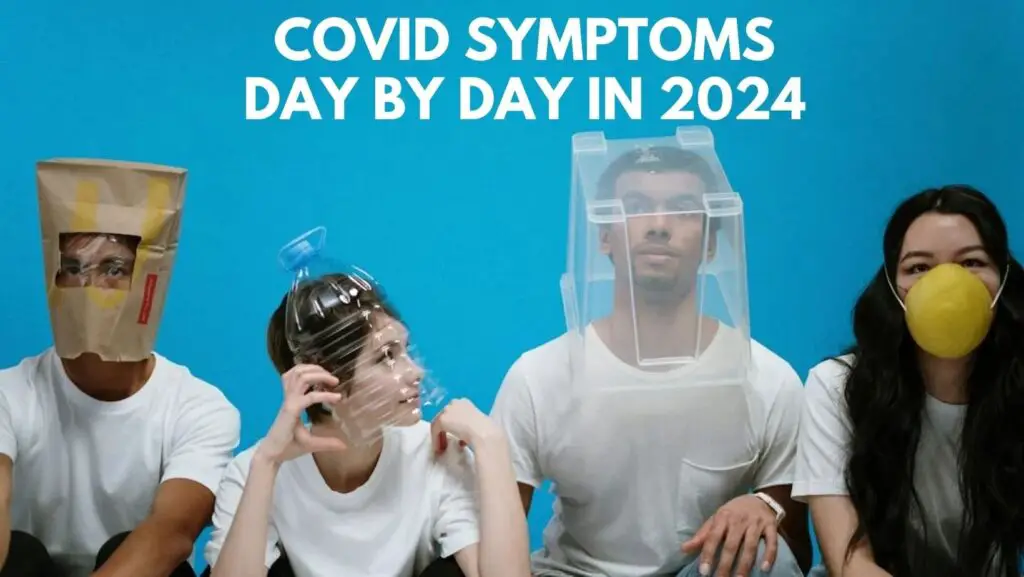In the ever-evolving landscape of the COVID-19 pandemic, it’s crucial to stay informed about the symptoms and their progression. This guide aims to provide a detailed overview of new covid symptoms 2024, keeping you well-informed and prepared. Throughout this comprehensive exploration, we’ll delve into the various stages of COVID-19, highlighting the signs that may manifest each day.
COVID Symptoms Day by Day in 2024
Day 1: Onset of Symptoms
The first day typically marks the onset of symptoms. Individuals may experience:
- Fever: A rise in body temperature is a common early symptom.
- Cough: A persistent, new cough may develop.
- Fatigue: Feeling unusually tired or exhausted.
Day 2: Intensification of Symptoms
As the infection progresses, symptoms may intensify, with the addition of:
- Shortness of Breath: Difficulty breathing or breathlessness.
- Body Aches: Muscular discomfort and body aches become more noticeable.
Day 3: Gastrointestinal Symptoms May Appear
For some individuals, gastrointestinal symptoms might become apparent, including:
- Nausea: Feeling sick to your stomach.
- Vomiting: The expulsion of stomach contents.
- Diarrhea: Frequent, loose, or watery bowel movements.
Day 4: Persistence of Symptoms
Symptoms persist, and individuals may also notice:
- Loss of Taste and Smell: A common symptom affecting the senses.
Day 5: Seeking Medical Attention
If symptoms persist or worsen, seeking medical attention is crucial. Symptoms may include:
- Persistent High Fever: A fever that doesn’t subside with over-the-counter medication.
Day 6-10: Continued Monitoring
Continued monitoring is essential. Individuals may experience a fluctuation in symptoms. Some may begin to feel better, while others might face more severe respiratory issues, leading to pneumonia.
Day 11-14: Potential Complications
For some individuals, symptoms may worsen during this period, leading to complications such as acute respiratory distress syndrome (ARDS) or multi-organ failure. Prompt medical attention is vital.
Day 15 and Beyond: Recovery or Long COVID
By this point, many individuals will start to recover. However, some may experience lingering symptoms known as “Long COVID,” which can persist for weeks or months. Common long-term symptoms include:
- Fatigue
- Shortness of Breath
- Cognitive Issues (“Brain Fog”)
Preventing the Spread: Key Measures to Take
To protect yourself and others, it’s essential to adhere to preventive measures:
- Vaccination: Get vaccinated to reduce the severity of symptoms and the risk of severe outcomes.
- Masking: Wear masks in crowded or indoor settings.
- Hand Hygiene: Wash hands regularly or use hand sanitizer.
- Social Distancing: Maintain a safe distance from others, especially in public spaces.
The Importance of Testing
If you experience symptoms or come into contact with someone who tested positive, get tested promptly. Early detection allows for timely medical intervention and helps prevent the spread of the virus.
Conclusion: Stay Informed, Stay Safe
Understanding COVID symptoms day by day is crucial for early detection and effective management. By recognizing the signs and acting promptly, we contribute to our collective efforts in controlling the spread of the virus. Stay informed, follow health guidelines, and prioritize your well-being and the well-being of those around you.
Remember, the key to overcoming this challenge lies in our collective responsibility and informed actions. Let’s stay united in the fight against COVID-19. Stay safe!






